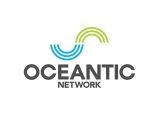Wind Energy – USA California
The Oceantic Network welcomes the Strategic Plan for Offshore Wind by the California Energy Commission (CEC).

The state’s plan charts a path to achieving its goal of 25 GW of offshore wind energy by 2045. It also outlines the required steps to foster a floating offshore wind industry in California, including port investments, upgraded transmission infrastructure, an improved permitting process, and supply chain and workforce development efforts.
California’s AB 525, passed in 2021, directed the CEC to establish offshore wind goals for 2030 and 2045. In 2022, the Commission set a goal of 25 GW of offshore wind power generation by 2045. It also required the Commission to develop the strategic plan released last month, to utilize offshore wind in pursuit of achieving 100 percent clean energy by 2045.
To support these goals, in February, Oceantic Network launched the West Coast Supplier Council, focused on the unique needs and development of the region’s offshore wind sector and its supply chain.
Then, in May, the Network collaborated with the Council to release the Suppliers’ Guide to Success: Smart Scaling for the U.S. West Coast Floating Wind Market, a report that analyzes the requirements for a full buildout of floating offshore wind on the West Coast and proposes industry and government solutions that will enable the buildout of a thriving supply chain.
Sam Salustro, vice president of strategic communication at Oceantic Network, said: “The Oceantic Network and its West Coast Supplier Council thank the California Energy Commission for their extensive efforts to lay the groundwork for offshore wind in the Golden State and look forward to building upon and putting the final AB525 report into action. Floating offshore wind provides reliable clean energy at the scale needed for California’s clean energy transition. Already, California’s ambitious goal to deploy 25 GW of offshore wind by 2045 has positioned the state as a global leader in this emerging energy sector, but achieving this bold goal requires scaling a new industry quickly. The state has a critical role to play in developing a viable industry and attracting a robust local supply chain by prioritizing immediate investments in port and transmission infrastructure, providing a long-term, predictable pipeline of projects, and targeting local supply chain investments that are globally cost competitive, rather than pursuing local content requirements that can delay project deployment and increase costs.”
“The Network’s West Coast Supplier Council members are veterans of the nation’s early development of offshore wind on the East Coast and are eager to support California’s stakeholders as they work to build the viable, scalable supply chain needed to achieve the state’s great ambitions.”
